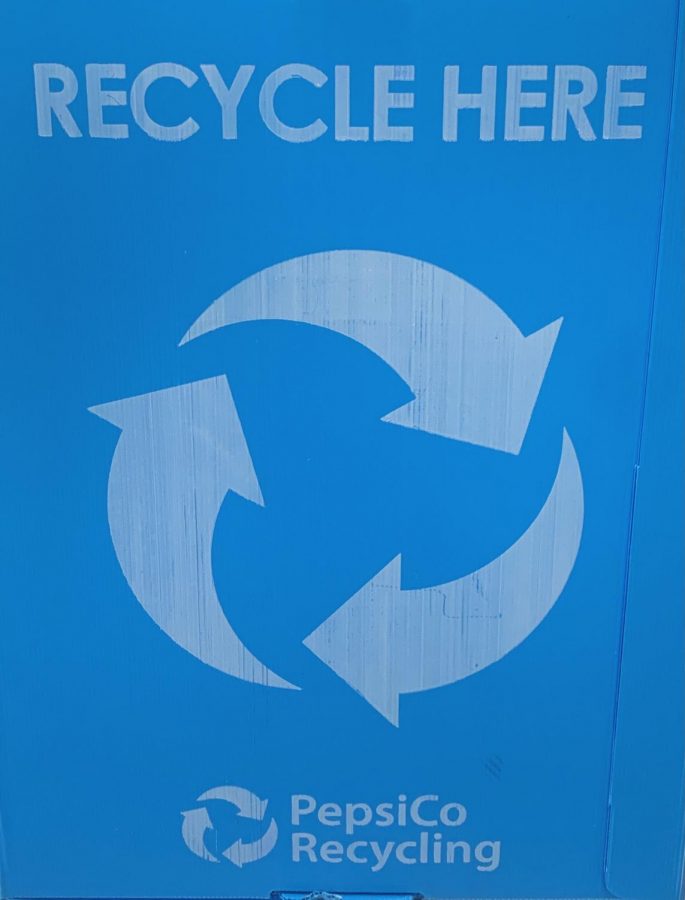Respect the Chasing Recycling Arrow
Recycling bin used at Miami Palmetto Senior High School classroom.
September 22, 2021
As consumers, we constantly come face to face with the chasing green arrows designating an item as recyclable. We enjoy that pat-on-the-back feeling after selecting the cereal box with the recycling symbol over the one without. Yet, how much can we depend on those chasing arrows?
Beginning in the 1970s, a group of college students designed the “chasing arrows” symbol for a company’s marketing contest. Originally, the symbol only applied to recyclable paper products. Ten years later, oil and plastic companies petitioned for the addition of the chasing arrows symbol on all of their products, even those that were not easily recyclable. The arrows simply indicate that recyclable material makes up the product. Each triangle of arrows contains a number that represents the general class of resin used to create the plastic product. In the U.S., disposal services only recycle 9% of all plastic products annually. An overwhelming majority of all “recyclable” plastic products swamp landfills or pollute the air through mass incinerations.
Recently, the California legislature recently passed Senate Bill 343 as a means of regulating the use of the recycling symbol on all consumer products. This bill requires the state’s recycling agency to collect data on plastic products recycled by the state 75% of the time and do not contain any toxic compounds. As a result, the chasing arrow stamp only appears on products that meet the criteria. Although California’s policy may lead to a greater accumulation of waste in landfills, it could also lead instead to a more definitive recycling process.
Our local community must adopt similar plans. So-called “green” elements of every political agenda encompasses projects that do not always directly involve the consumer. Yet, ensuring proper identification of recyclable items directly affects consumers. As recycling remains an everyday occurrence in many of our lives, our representatives, disposal services and environmental agencies must regulate the green stamp.
Miami-Dade County recycles only 18% of its total collected waste — one of the lowest recycling rates in the state. Broward and Palm Beach County recycle up to 33% and 35% of their total collected waste. In addition to misinformation and costs of recycling in certain areas, these low numbers are also attributed to misplacement of the recycling symbol. Due to the importance of recycling and preserving the precious land on Earth, consumers and producers alike must respect the true meaning of the recycling symbol.
In an increasingly environmentally-conscious community, as consumers, we must dig a little deeper on the specifics of what we can and cannot recycle, despite the ever-present green stamp. Taking an extra step on our end ensures a more effective recycling process and potential upgrade in Miami-Dade County’s disposal services. Miami-Dade County provides easily accessible information on proper recycling through their extensive recycling site.
Over the past several decades, recycling has become a popular method of preserving the environment. It still has immense value, though its symbol must be better regulated to ensure the greatest positive effect. As a universally-accepted symbol of sustainability, all communities must respect the chasing green arrows.









